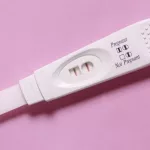Imagine you’ve just received a brand‑new kidney—your life‑changing “second chance.” Suddenly, your immune system decides it’s a party‑crasher and starts attacking the gift. That unsettling scenario is what doctors call kidney transplant rejection. It sounds scary, but with the right knowledge you can spot the warning signs early, keep your graft thriving, and stay in control of your health.
In the next few minutes we’ll walk through why rejection happens, the different flavors it can take, how to catch it before it hurts, and the newest science – even the wild idea of a pig kidney xenotransplantation – that could reshape the whole conversation. Grab a coffee, settle in, and let’s chat like friends about protecting the kidney you just earned.
What Is Rejection?
At its core, rejection is the body’s natural defense system (your human immune response) mistaking a perfectly healthy organ for an invader. When a kidney from another person (or potentially a pig) is placed inside you, it carries proteins that look “foreign.” Your immune cells—especially T‑cells and B‑cells—see those proteins, raise the alarm, and launch an attack.
How common is this? According to the NHS, roughly 10–15 % of kidney recipients experience at least one episode of rejection during the first yearrel=”nofollow noreferrer”. While the numbers sound high, most episodes are caught early and treated successfully, meaning the graft can keep working for many years.
Types of Rejection
Rejection isn’t a single monster; it comes in several shapes. Knowing which one you might face helps you and your transplant team act fast.
| Type | When It Happens | Typical Cause | Outcome (if treated early) |
|---|---|---|---|
| Hyper‑acute | Minutes‑hours after transplant | Pre‑existing antibodies (rare) | Usually prevents graft‑take; immediate intervention needed |
| Acute | Days‑months (most common in first 12 months) | Cellular or antibody‑mediated attack | 90 % reversibility with steroids or medication tweak |
| Chronic | Years after transplant | Slow, ongoing immune injury + scar tissue | Gradual loss of function; may need dialysis later |
| Smoldering (sub‑clinical) | Detected only on labs | Low‑grade immune activity | Managed by adjusting meds before symptoms appear |
Why Does It Happen?
Human immune response
Think of your immune system as a vigilant security team. When they see a face they don’t recognize—like the HLA (human leukocyte antigen) markers on a donor kidney—they trigger alarms. The alarm can be a wave of T‑cells (cellular rejection) or a flood of antibodies (antibody‑mediated rejection).
Donor‑recipient mismatch
Even with the best HLA matching, tiny differences remain. Blood‑type incompatibility, prior sensitizations (from pregnancies, transfusions, or earlier transplants) can raise the level of “defence proteins” in your bloodstream, making rejection more likely.
Medication adherence
Missing a dose of your immunosuppressants is like leaving the front door unlocked. Studies show that non‑adherence is the single biggest modifiable risk factor for acute rejection rel=”nofollow noreferrer”. Setting alarms, using pillboxes, or phone‑app reminders can make a world of difference.
Infections and stressors
Viral infections—especially CMV, COVID‑19, or even the flu—can temporarily boost immune activity and tip the balance toward rejection. That’s why your transplant team will often give prophylactic antivirals and vaccines.
Other sensitizing events
Pregnancy, prior transplants, or even multiple blood transfusions can leave “memory” antibodies that recognize foreign tissue later on. These are called donor‑specific antibodies (DSA) and are a hallmark of antibody‑mediated rejection.
Spotting Rejection Early
Most rejections are sneaky; they don’t announce themselves with fireworks. Still, there are clues you can keep an eye on.
Common early symptoms
- Flu‑like aches, chills, low‑grade fever
- Sudden rise in blood pressure
- Pain or tenderness over the transplant site (usually the lower right abdomen)
- Decreased urine output or a feeling of “fullness”
- Unexplained weight gain—often due to fluid retention
- Extreme fatigue
If any of these pop up, call your transplant nurse or doctor right away. Even a mild fever could be the first whisper of an immune flare.
Lab clues
Regular bloodwork is the unsung hero in transplant care. A rising serum creatinine or a drop in eGFR tells your team the kidney isn’t filtering as well as it should. Some centers also monitor DSA levels; an upward trend is a red flag for antibody‑mediated rejection.
When symptoms are silent
Up to 20 % of acute rejections have no outward signs. That’s why you’ll have clinic appointments every few weeks in the first year—just to let the lab do its quiet detective work.
How Doctors Diagnose Rejection
Blood tests
Creatinine, BUN (blood urea nitrogen), and DSA panels form the first line of defense. A sudden jump in creatinine, even a few points, triggers further investigation.
Imaging
Renal ultrasound with Doppler can show reduced blood flow, hinting at inflammation. It’s painless, quick, and often done alongside your routine labs.
Kidney biopsy
The gold standard. Under local anesthesia, a thin needle grabs a tiny piece of kidney tissue. Under a microscope, pathologists can tell whether T‑cells, antibodies, or scar tissue are the culprits. The procedure sounds intimidating, but most patients recover in a day or two with minimal discomfort.
Molecular diagnostics (future‑proof)
Emerging tests look at gene‑expression patterns in blood, aiming to predict rejection before a biopsy is needed. A 2023 multicenter study reported a 92 % accuracy rate for one such panel rel=”nofollow noreferrer”. While still research‑phase, it shows promise for a less invasive future.
Treatment Options
Adjusting immunosuppressants
The most common first step is to increase steroids or add an additional agent (like an anti‑CD20 monoclonal antibody). For cellular rejection, a short pulse of high‑dose steroids can calm the angry T‑cells within hours.
Plasmapheresis & IVIG
When antibodies are the main problem, doctors may perform plasmapheresis—essentially “blood washing”—to strip those antibodies away, followed by intravenous immunoglobulin (IVIG) to reset the immune balance.
Novel therapies
Researchers are testing costimulation blockers (e.g., belatacept) and even CAR‑T cells designed to target specific immune pathways. While not standard yet, they may become the next line of defense for stubborn cases.
Managing side effects
Immunosuppressants can bring their own baggage: high blood pressure, diabetes, or increased infection risk. Regular monitoring, a low‑salt diet, and staying active help keep those side effects in check.
If the graft fails
Even with the best care, some kidneys eventually stop working. In that scenario, dialysis or a second transplant becomes the next step. The good news? The experience you gain from the first transplant often makes the second smoother.
Preventing Rejection
Medication adherence tools
Use a pillbox with daily compartments, set phone reminders, or download a transplant‑specific app that tracks doses and alerts you when a refill is needed. Think of it as a personal coach for your kidneys.
Regular follow‑up schedule
In the first year, labs are typically drawn every 1–3 months. After that, many centers shift to every 3–6 months, but your doctor may ask for more frequent checks if you have risk factors.
Lifestyle tips
- Low‑salt, balanced‑protein diet (your dietitian can help)
- Gentle cardio—walking, swimming—to keep blood pressure down
- Avoid smoking and limit alcohol
- Stay up to date on vaccines (flu, COVID, pneumonia)
Future preventive research
Scientists are exploring ways to induce “tolerance,” where the immune system learns to accept the new kidney without lifelong drugs. One exciting avenue involves genetically edited pig kidneys that lack the most immunogenic sugars—an approach that could minimize rejection risk altogether. For a dive into this frontier, read about pig‑to‑human transplant research and the role of xenotransplant markers in monitoring.
Xenotransplantation – A Peek at the Future
What if a pig kidney could be harvested, engineered, and placed into a human without triggering the usual immune fireworks? That’s the promise of pig kidney xenotransplantation. By deleting genes that produce the sugar “α‑gal” and adding human complement‑regulatory proteins, researchers have dramatically cut down hyper‑acute rejection in animal models.
Early 2024 trials in New York and Maryland reported a handful of patients who survived for weeks to months with functional pig kidneys, thanks to a cocktail of immunosuppressants and novel tolerance‑inducing protocols. The biggest challenge remains the “xenotransplant markers” that tell doctors whether the human immune system is beginning to react. Continuous monitoring of these markers may become the standard for both allografts (human‑to‑human) and xenografts (pig‑to‑human).
While we’re still a few years away from widespread clinical use, the science is moving fast. If you’re curious about how this could affect the future of kidney disease, keep an eye on the latest FDA announcements and peer‑reviewed journals—your transplant community is always buzzing about it.
Key Takeaways
- Rejection is the immune system’s natural response to a “foreign” kidney.
- Acute rejection is most common early on; chronic rejection can develop over years.
- Symptoms may be subtle—regular labs are your best early warning system.
- Sticking to immunosuppressant schedules dramatically lowers risk.
- Emerging science—like pig kidney xenotransplantation—could change the game.
Remember, you’re not alone in this journey. Your transplant team, support groups, and reliable online resources are all here to help you navigate the ups and downs. Keep asking questions, stay curious, and treat your new kidney like the precious gift it is.
If you ever feel uncertain about a symptom, a lab result, or just want reassurance, don’t hesitate to call your transplant coordinator. A quick chat can catch a problem early and keep your kidney humming for years to come.


















Leave a Reply
You must be logged in to post a comment.